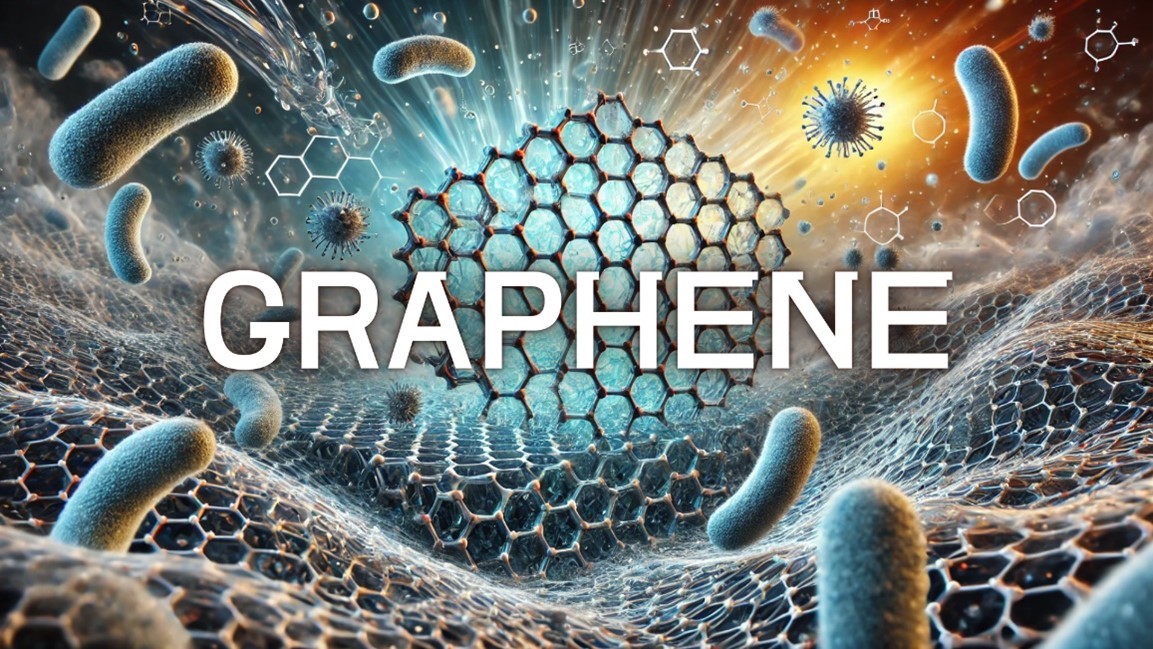Introduction to Graphene(그래핀)
In recent years, research has led to the development of new, sustainable materials. Among them, the so-called “material of the future,” graphene(그래핀), stands out. Interestingly, graphene was originally discovered by chance when researchers attached Scotch tape to a chunk of graphite and then peeled it off.
Since graphene won the 2010 Nobel Prize in Physics, it has been in the spotlight and is commonly referred to as a “dream material.” With expanded applications, advancements in commercialization, and progress in mass production technologies, the industrial use of graphene is rapidly increasing.

Discovery and History of Graphene(그래핀 역사)
What is Graphene(그래핀)?
Graphene(그래핀) is a material composed of pure carbon extracted from graphite. It is known for its remarkable properties, including strength, flexibility, lightweight composition, and high resistance—200 times stronger than steel and 5 times lighter than aluminum. Thanks to these attributes, the industrial sector has been paying close attention to graphene. Its applications span a wide range of fields such as energy, construction, medicine, electronics, smartphones, and solar panels.
Recent studies show that graphene has excellent bacterial removal and cleaning effects, making it increasingly relevant in antibacterial products and cleaning supplies.
Key Properties of Graphene
Among the various characteristics of graphene, its outstanding thermal and electrical conductivity, elasticity, strength, light weight, and high resistance are especially important. These properties have the potential to revolutionize multiple industries.
Main Features of Graphene(그래핀 특징)
- High Conductivity
- Graphene can extend battery life by up to 10 times and significantly shorten charging times, enhancing autonomy. It seems only a matter of time before graphene replaces a large portion of currently used lithium batteries.
- Lightweight
- Given its lightweight nature, graphene is ideal for manufacturing drone batteries, producing lighter and stronger power sources. Since batteries are among the heaviest components in many technologies, reducing their weight represents a major innovation. By integrating graphene, one of the biggest limitations currently facing drones can be minimized.
- Transparency and Flexibility
- Graphene is transparent and absorbs only about 2% of light. Thanks to its transparency and flexibility, it can be used to produce flexible displays for all kinds of devices. Graphene can be folded up like a wrap, reducing the risk of damage significantly. This has implications for smartphones, televisions, vehicles, and more.
- High Resistance
- Not only is graphene an excellent electrical conductor, but it also exhibits outstanding resistance. As a result, it’s expected to bring major advancements in lighting. For example, graphene-based light bulbs can potentially outlast current LED bulbs while reducing energy consumption.
Applications and Use Cases of Graphene
Key Application Areas
Many industries are currently focusing on graphene. By leveraging its unique properties, these sectors can overcome limitations of conventional methods and deliver better products or services. Below are some prominent examples:
- Graphene in Energy
- Graphene-based rechargeable batteries can significantly improve energy efficiency. Because graphene helps prevent devices from overheating, products become stronger and lighter. Applied to household materials, it can enhance thermal regulation and reduce heating and cooling costs. For instance, paint that contains graphene is a notable example. Looking ahead, this innovation may represent a critical turning point, enabling far higher energy production in the renewable energy sector.
- Graphene in Construction
- In the construction industry, applying graphene can improve a building’s insulation. It can also increase resistance to corrosion, moisture, and fire, making structures more durable and sustainable. Improved construction materials and green components, such as “green concrete,” can offer superior performance compared to traditional materials.
- Graphene in Healthcare
- Graphene’s properties also hold promise for medical applications. By incorporating graphene, hearing aids could be made stronger, more flexible, and lighter. In fact, it might even be possible to create artificial bones and muscles for surgical implants. Though research is still underway, graphene oxide—derived from oxidizing graphene—could become a valuable tool in diagnosing and treating diseases, thanks to its exceptional mechanical properties.
- Graphene in Electronics
- Graphene could transform the electronics sector. By integrating graphene into electronic components, manufacturers can create smaller, lighter, stronger, and more efficient devices that were previously impossible with conventional materials. Graphene also enhances moisture resistance, improving durability. Furthermore, it offers thermal and electrical conductivity 1,000 times better than copper.
Latest Applications: Graphene for Cleaning and Hygiene Management
Graphene-based Cleaning Products
Graphene has recently found its way into multi-purpose cleaning agents, thanks to its proven effectiveness in eliminating bacteria and viruses. Consequently, graphene-based products are deemed more effective than conventional cleaners in maintaining cleanliness and hygiene across various settings. Because it can be used on balconies, refrigerators, and bathrooms, graphene multi-purpose cleaners are widely praised for their practicality and versatility.
Graphene Market Trends(그래핀 마켓 트렌드)
Graphene is utilized in diverse sectors such as electronics, energy, and composite materials, driving rapid market growth. According to Fortune Business Insights, the global graphene market was valued at approximately USD 432.7 million in 2023 and is expected to reach USD 5,193.2 million by 2032, with a compound annual growth rate (CAGR) of 31.8%.
Additionally, Mordor Intelligence estimates that the graphene market will be worth around USD 93 million in 2024, growing to USD 3,864 million by 2029, with a projected CAGR of 4.77% over that period.
This growth is mainly attributed to graphene’s exceptional physical properties and its expanding range of applications across various industries, particularly in electronics, energy storage, and composite materials. The Asia-Pacific region currently holds the largest market share and is projected to maintain that status in the coming years.

Ongoing Research and Challenges
Graphene Research(그래핀 연구) in South Korea
South Korea is at the forefront of both research and commercialization of graphene. Numerous domestic companies and research institutes are exploring the material’s diverse applications, especially in the fields of electronics, energy storage, and composite materials.
- Samsung Electronics: Researching next-generation semiconductors and display technologies based on graphene, focusing on transparent electrodes and high-performance transistors.
- LG Chem: Concentrating on developing graphene-based battery materials to improve energy density and charging speeds.
- Korea Institute of Science and Technology (KIST): Investigating graphene synthesis and application techniques, exploring potential uses across various industries.
Korea’s graphene market is expanding in tandem with the growth of the electronics and communications sectors. Graphene’s superior electrical conductivity and thermal properties greatly enhance the performance of electronic devices. Additionally, its usage in energy storage devices and composite materials is on the rise.
Major Challenges for Graphene Companies
Despite its many advantages, graphene still faces obstacles that must be overcome for widespread commercialization. Two key challenges include:
- Difficulties in Mass Production
- Producing high-quality graphene at scale remains an issue. The manufacturing process is costly and time-consuming, and scaling up without compromising quality is problematic. In particular, using chemical vapor deposition (CVD) to create high-quality, single-layer graphene is challenging to implement on a large scale.
- Lack of Standardization
- The graphene industry is still in its early stages, with minimal regulation and standardized protocols. Numerous companies produce various types of graphene, causing confusion in the market. As a result, low-quality graphene can circulate, undermining consumer confidence.
Final Thoughts
Graphene’s exceptional qualities—ranging from conductivity to structural strength—position it as one of the most promising future materials. While challenges in mass production and standardization remain, ongoing research and broader industry adoption signal that graphene will continue to reshape sectors like electronics, construction, energy, healthcare, and more.
By addressing these hurdles, companies and research institutions around the world will pave the way for a graphene-powered future, offering unprecedented innovation and sustainability in countless applications.


